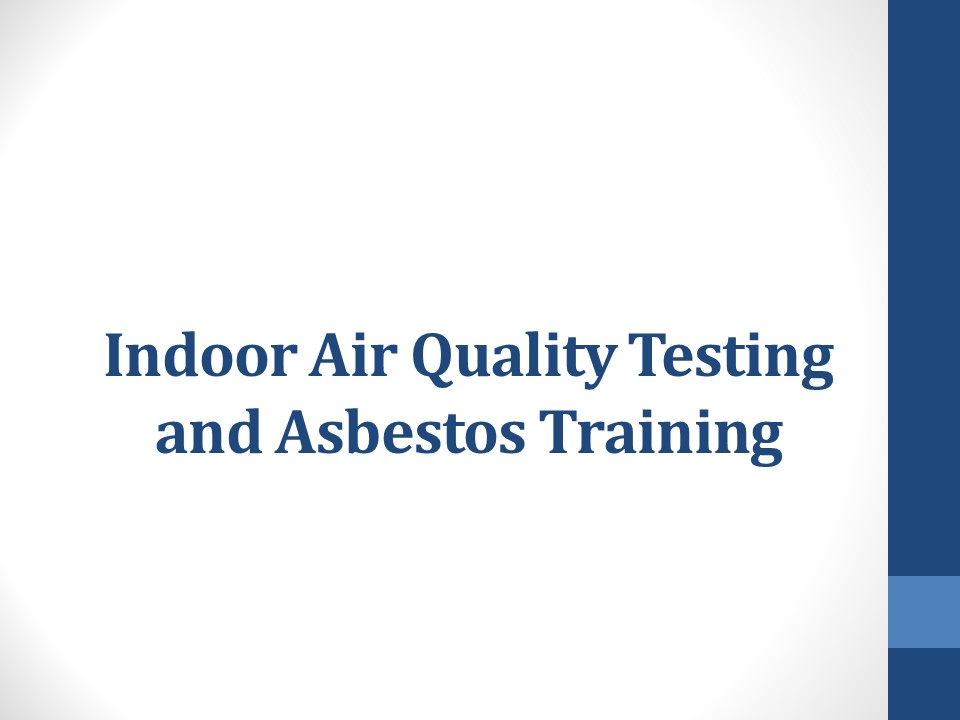Indoor Air Quality Testing and Asbestos Training - PowerPoint PPT Presentation
Title:
Indoor Air Quality Testing and Asbestos Training
Description:
Taking an indoor air quality test is one of the safest steps that you can take if you have concerns about the air in your home. – PowerPoint PPT presentation
Number of Views:1
Title: Indoor Air Quality Testing and Asbestos Training
1
Indoor Air Quality Testing and Asbestos Training
2
- Taking an indoor air quality test is one of the
safest steps that you can take if you have
concerns about the air in your home. A
professional inspector can conduct a test to show
you the level of pollutants in your home. This
can help you identify the source of the problem
and resolve it. - Many factors contribute to a poor indoor air
quality. These include excess moisture and dust.
It can also contain harmful chemicals and toxic
substances. In addition, there are biological
pollutants that are created by living things in
your home.
3
- If you are experiencing respiratory problems or
fatigue, it may be time to have your air tested.
If you have a history of heart disease, cancer,
or lung disease, you might want to get your air
tested to see if there are any pollutants that
could be making your symptoms worse. - Several types of indoor air quality testing are
available. Some kits can measure carbon monoxide
and other potentially harmful gases. Other kits
are geared toward looking for allergens and dust.
The Environmental Protection Agency sets
standards for these tests. A radon test can be
done by collecting samples for several days. The
device is then sent back to the lab for analysis.
4
- A mold test can identify the presence of mold
spores in your air. Typically, a standard mold
test will give you a quantitative estimate of the
amount of mold spores present in your home. It
will also provide you with a count of the
background debris and skin cells in the air. - Some of the contaminants that can be found in
your indoor air are allergens, benzene,
formaldehyde, trichloroethylene, and other
volatile organic compounds. These chemicals can
be found in household items and construction
materials. They should not be present at
concentrations that are unsafe for you. Other
substances such as lead can also be present in
your air. These are usually found in certain
paints.
5
- Other common indoor pollutants are bacteria,
viruses, and combustion products. These can be
carried in the air from people, pets, and other
sources. Other plant spores can be found in the
air as well. If your home has windows, these
contaminants can come inside. - It is important to have your air tested because
it can affect the health of those in your home.
The US Environmental Protection Agency estimates
that indoor air pollutants can be two to five
times more harmful than the air outdoors. A test
can help you find the source of the problem.
6
- A good AQI is below 50. The higher the AQI, the
more likely it is that your breathing will be
uncomfortable. This can be especially problematic
for individuals with asthma or other respiratory
conditions. Having a good AQI will allow you to
breathe easier and will help you avoid illnesses. - If you are considering testing your home's air,
it is best to hire a trained, certified
inspector. These professionals will perform a
thorough test to ensure that your home's air is
clean and safe. They will also provide you with
actionable next steps to improve the condition of
your home's indoor air.































